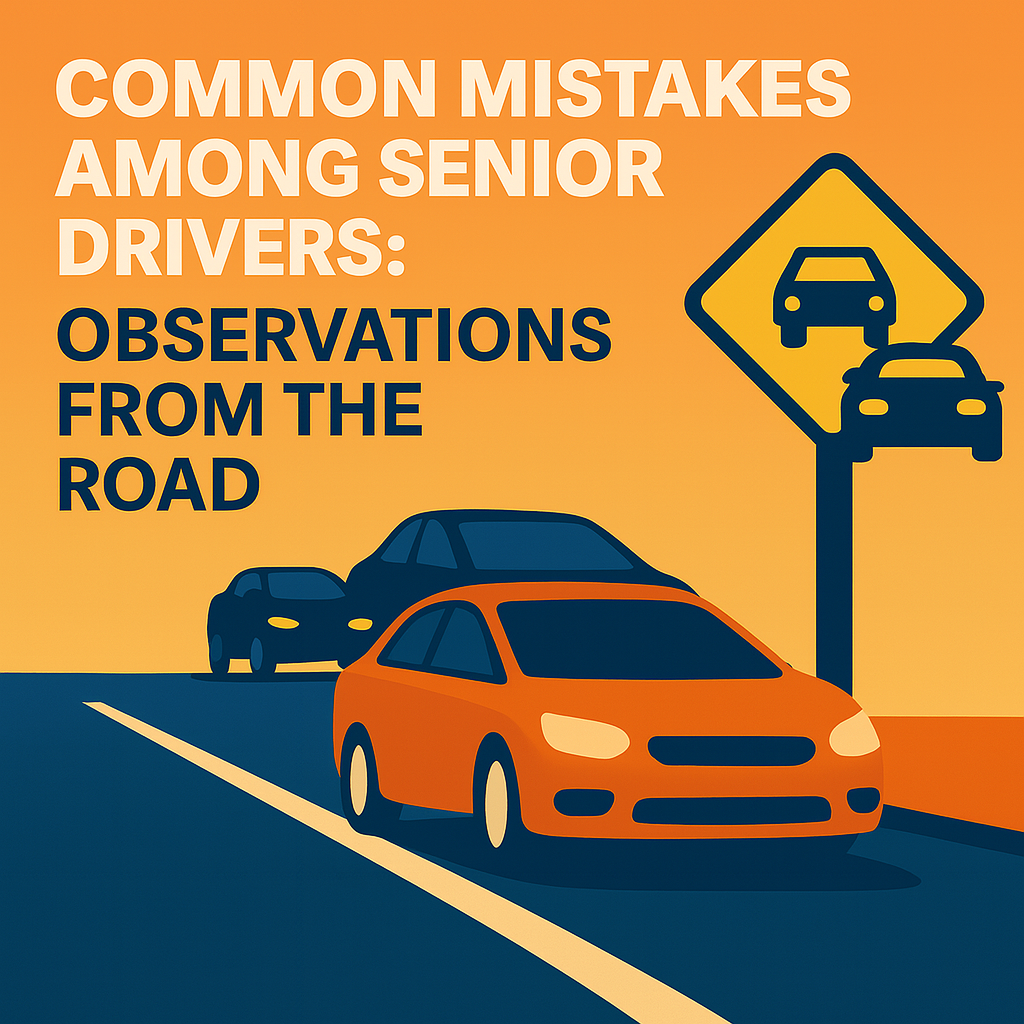Introduction: A Matter of Perception and Safety
When senior drivers make mistakes, society tends to remember those incidents more clearly, reinforcing stereotypes. Just like the unfair stigma often placed on “Asian drivers,” older drivers are sometimes blamed for accidents more harshly than others. While stereotypes are not fact, it’s still essential that all drivers reflect and improve their skills for the safety of themselves and the community.
Merging with Poor Gap Judgment and Failing to Accelerate
One of the most common issues is misjudging the gap when merging into traffic. I often observe senior drivers turning onto a main road using a small gap, and then failing to accelerate quickly enough to match the flow of traffic. For instance, on a 60 km/h road, a car joining at 35–40 km/h disrupts surrounding vehicles and increases crash risk. This habit may come from hesitation, lack of recent experience, or an assumption that “slow is safe.” In truth, safe merging requires matching the speed of other vehicles. The recommended solution is targeted practice with a professional instructor, focusing on real traffic judgment and acceleration control.
Lane Positioning and Drifting into Bike Lanes
Another frequent error involves poor lane centering, where drivers hug the left too closely or unintentionally drift into bike lanes. This endangers cyclists and can lead to traffic penalties. Often, the cause is a visual misperception of lane width or a driving habit formed in countries with narrower roads. Retraining with emphasis on shoulder references and lane-centering strategies—such as using visual cues from the side mirror and lane markings—can improve consistency and confidence.
The “Slower is Safer” Misbelief
Many senior drivers hold the belief that driving slower is always safer. But excessive caution, such as driving 45 km/h in a 60 km/h zone, may cause more harm than good—leading to congestion, risky overtaking by impatient drivers, and potential rear-end crashes. Research shows that driving significantly below the speed limit can be just as dangerous as speeding (Government of South Australia, 2024). The goal should not be fast driving, but confident, legal, and consistent driving that fits with the expected road environment.
Braking at Every Intersection Due to Uncertainty
Difficulty in identifying the correct place to turn is another widespread issue. I’ve seen many drivers brake unnecessarily at every intersection to read signs or look for landmarks. This behaviour creates confusion and danger for following vehicles. The root cause often lies in unfamiliarity with the local layout or reduced visual sharpness. To improve, drivers can rely on GPS with audio instructions and review the route beforehand. Regular vision checks and appropriate eyewear updates are also essential.
Forgetting to Signal
Failing to indicate when changing lanes or turning—particularly at roundabouts—is a dangerous but common oversight. For some older drivers, this may be due to physical limitations, forgetfulness, or simply a loss of habit. Regardless, signalling is a non-negotiable road rule that ensures safe communication with other drivers. Refresher lessons can help rebuild this into muscle memory, and if mobility is an issue, modifications like steering wheel spinners may assist.
Conclusion: It’s About Adaptation, Not Age
The mistakes outlined above are not exclusive to older drivers. Younger drivers make them too—but society tends to judge seniors more harshly. Senior migrant drivers often face greater challenges: adapting to new road rules, unfamiliar signage, and stigma. What’s needed is not blame, but support. Road safety is a shared responsibility. With the right tools—refresher lessons, confidence-building, and tailored advice—senior drivers can stay safe and independent for years to come.
References
- Government of South Australia, 2024. Driving too slowly can be dangerous too. [online] MyLicence SA. Available at: https://mylicence.sa.gov.au/road-rules/the-drivers-handbook/speed-limits [Accessed 23 Jul 2025].
- Transport for NSW, 2023. Speeding – not just about going over the limit. [online] Available at: https://roadsafety.transport.nsw.gov.au/stayingsafe/speeding/index.html [Accessed 23 July 2025].
- Solomon, D., 1964. Accidents on main rural highways related to speed, driver, and vehicle. U.S. Dept. of Commerce, Bureau of Public Roads. In: Road Accident Research Unit, Adelaide University, 2001. Travelling Speed and the Risk of Crash Involvement on Rural Roads.
- Transport for NSW, 2023. Safe Speeds (Safe System). [online] Available at: https://towardszero.nsw.gov.au/safesystem/safe-speeds [Accessed 23 July 2025] .
- Transport for NSW, 2023. Speed Limit: Obey, or Not Obey? (PDF). [online] Available at: https://www.parliament.nsw.gov.au/tp/files/83720/Report%20-%20Speed%20limits%20and%20road%20safety%20in%20regional%20NSW.PDF [Accessed 23 July 2025] .
- Transport for NSW, 2023. Speeding – Get the facts. [online] Available at: https://roadsafety.transport.nsw.gov.au/roadsafety/topics-tips/speeding [Accessed 23 July 2025] .
- Transport for NSW, 2023. Towards Zero: Speed Fact Sheet. [online] Available at: https://www.transport.nsw.gov.au/system/files/media/documents/2023/speed-fact-sheet.pdf [Accessed 23 July 2025]
